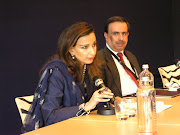That Kashmiris who took to the streets a few months ago in a mass intifada-like uprising should turn out in even larger numbers to vote in the state election may be seen by cynics as evidence of Kashmiri fickleness. This would be a mistake. We are witnessing a new transformative politics in Kashmir: the “ordinary” Kashmiri is seizing every opportunity to achieve peaceful change, from the politics of the street to the politics of the ballot.
It would be a mistake to view the elections as signalling a return to “business-as-usual” in the politics of the state. The triumph of democracy should not be a moment of triumphalism. In fact, by acting in a statesmanlike fashion now, New Delhi will demonstrate a willingness to reward participation in the democratic process and not be seen as capitulating to extra-constitutional pressure. This unique opportunity must not be missed.
How should New Delhi respond to this new politics of peaceful positivism? Neither development nor reconciliation can be magically decreed. But much can be done unilaterally and immediately to respond to the deep yearning of the people of the state for security in all its dimensions: that is, freedom from fear in the physical, political, economic and cultural spheres. The following is a tentative five-point charter:
First, and immediately, to take advantage of the improved situation on the ground, the government must strike a better balance between the rights of the people and the need to deal with militancy. The release of political detainees must be a top priority. A general amnesty would be a powerful gesture symbolising the new spirit of reconciliation. It is also time now to consider seriously returning the armed forces to their pre-1989 position, ensuring — in letter and spirit — zero-tolerance for human rights violations and repealing many of the laws that have given the security forces a virtual carte blanche in the valley. The Jammu and Kashmir police needs to be now given full responsibility for maintenance of law and order even while it needs to be further modernised.
Second, and most critically, there is need to respond credibly to the legitimate aspirations for autonomy, self rule and regional balance. There are initiatives that the government of India can take unilaterally to signal seriousness of intent, including on issues such as the jurisdiction of Article 356 relating to emergency powers and mode of appointment of the governor. To deal with the more far-reaching changes, the government should revamp the working group set up to examine centre-state relations chaired by Justice Sagheer Ahmed which has so far failed to submit a meaningful report. Within a fixed time frame, this group should invite inputs from all stakeholders, including the separatists, examine all proposals for devolution, and make clear recommendations. To dispel the notion that this would be “one more commission”, the government should state in advance its willingness to accept and implement the recommendations of this group, including those that seek to address the legitimate grievances of Jammu and Ladakh.
Third, measures must be taken to give more concrete expression to the PM’s vision of “making international borders irrelevant”. Sustainable economic development of the state will not come from more external economic sops, which only weaken the relationship between the people and their government: accountability is the flip-side of taxation. Far more meaningful would be measures that alleviate the economic isolation of the state. The state should be able to benefit more fully from conventional economic opportunities by facilitating regional trade, as well as greater regional cooperation on water, electricity and tourism.
Fourth, and more forward looking, would be to give the youth of Jammu and Kashmir a greater stake in the country’s booming knowledge economy. J&K has witnessed, in recent years, a massive expansion of educational infrastructure from the school to the university level. Much of this expansion, however, has not been directed to the needs of the market, leading to high levels of uneducated unemployment. New public-private partnerships, with the involvement of companies such as Infosys, Wipro and NIIT, are needed to exploit the state’s potential comparative advantage in exporting skilled services. Public-private partnerships are also needed to enhance international connectivity by extending broad-band access in the state — with stronger incentives provided through the existing universal access funds for telecommunications. Given the geography of the state, and its growing endowments of skills, electronic exports of services may play a more significant role in its beneficial economic integration than the export of apples and handicrafts.
Finally, given the regional (and religious) polarisation in the state, it is essential to establish a commission for reconciliation that will recommend measures to revive the traditional spirit of harmony within the valley, between Muslims and Pandits; and between Kashmir, Jammu and Ladakh. The commission would also work with civil society actors and other stake holders to help re-build the interdependent relationship that has traditionally existed at the inter and intra-regional level between different communities and groups. The commission would also be asked to ensure that every cultural identity in the state finds space and strength, and that the return of Kashmiri Pandits can soon become a reality.
The PM has stated and demonstrated, repeatedly, that he considers achieving peace and stability in Jammu and Kashmir to be one of the most important tasks before his government. It would be a major legacy of this government if it could lay the foundation for a “new” Jammu and Kashmir before the next general election.







